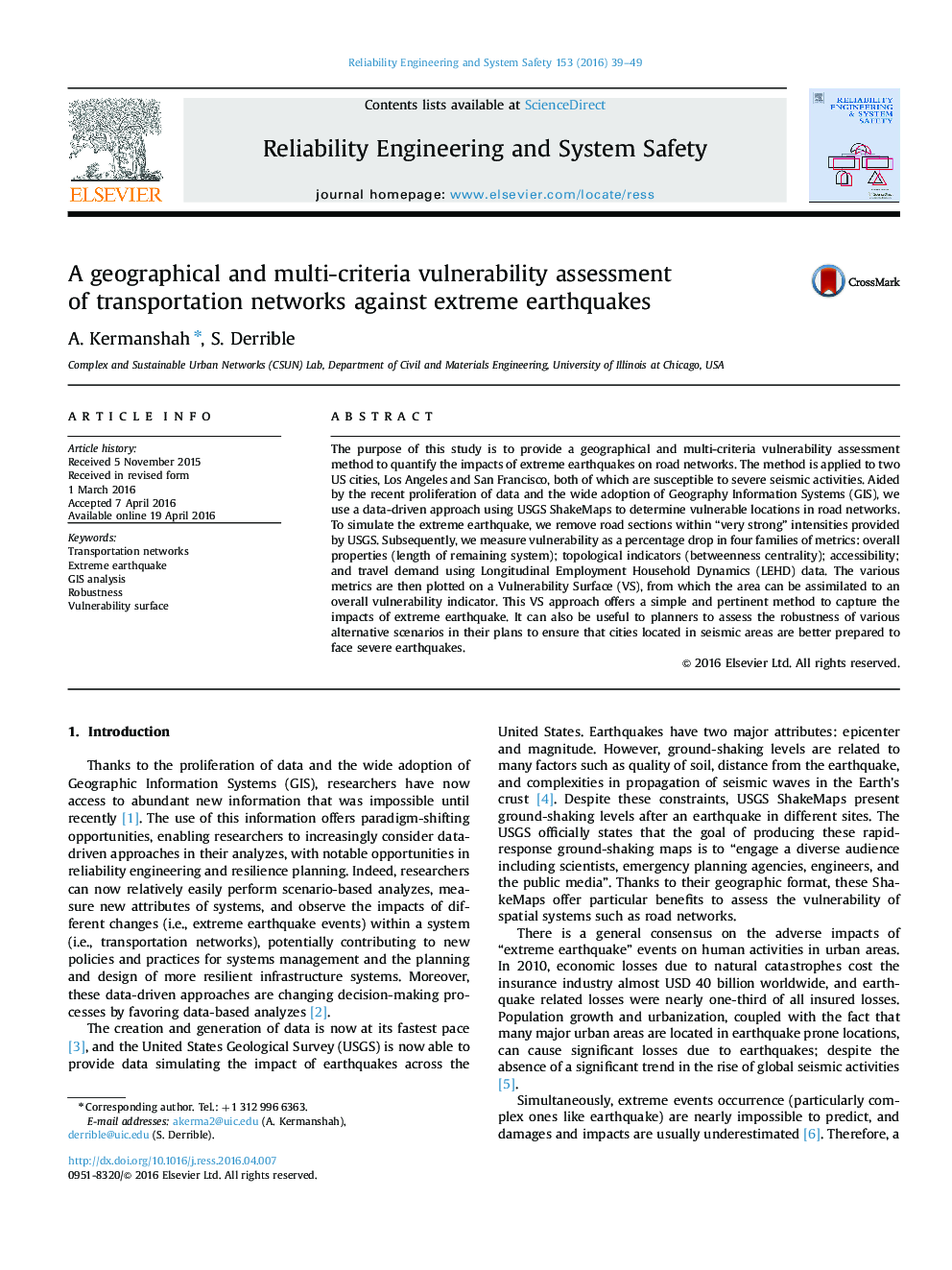| Article ID | Journal | Published Year | Pages | File Type |
|---|---|---|---|---|
| 806206 | Reliability Engineering & System Safety | 2016 | 11 Pages |
•Developed geographical and multi-criteria vulnerability assessment method.•Quantify the impacts of extreme earthquakes on transportation networks.•Data-driven approach using USGS ShakeMaps to determine vulnerable locations.•Measure vulnerability as a percentage drop in four families of metrics: ○Overall properties.○Topological indicators.○Accessibility.○Travel demand using Longitudinal Employment Household Dynamics (LEHD) data.•Developed Vulnerability Surface (VS), a new pragmatic vulnerability indicator.
The purpose of this study is to provide a geographical and multi-criteria vulnerability assessment method to quantify the impacts of extreme earthquakes on road networks. The method is applied to two US cities, Los Angeles and San Francisco, both of which are susceptible to severe seismic activities. Aided by the recent proliferation of data and the wide adoption of Geography Information Systems (GIS), we use a data-driven approach using USGS ShakeMaps to determine vulnerable locations in road networks. To simulate the extreme earthquake, we remove road sections within “very strong” intensities provided by USGS. Subsequently, we measure vulnerability as a percentage drop in four families of metrics: overall properties (length of remaining system); topological indicators (betweenness centrality); accessibility; and travel demand using Longitudinal Employment Household Dynamics (LEHD) data. The various metrics are then plotted on a Vulnerability Surface (VS), from which the area can be assimilated to an overall vulnerability indicator. This VS approach offers a simple and pertinent method to capture the impacts of extreme earthquake. It can also be useful to planners to assess the robustness of various alternative scenarios in their plans to ensure that cities located in seismic areas are better prepared to face severe earthquakes.
